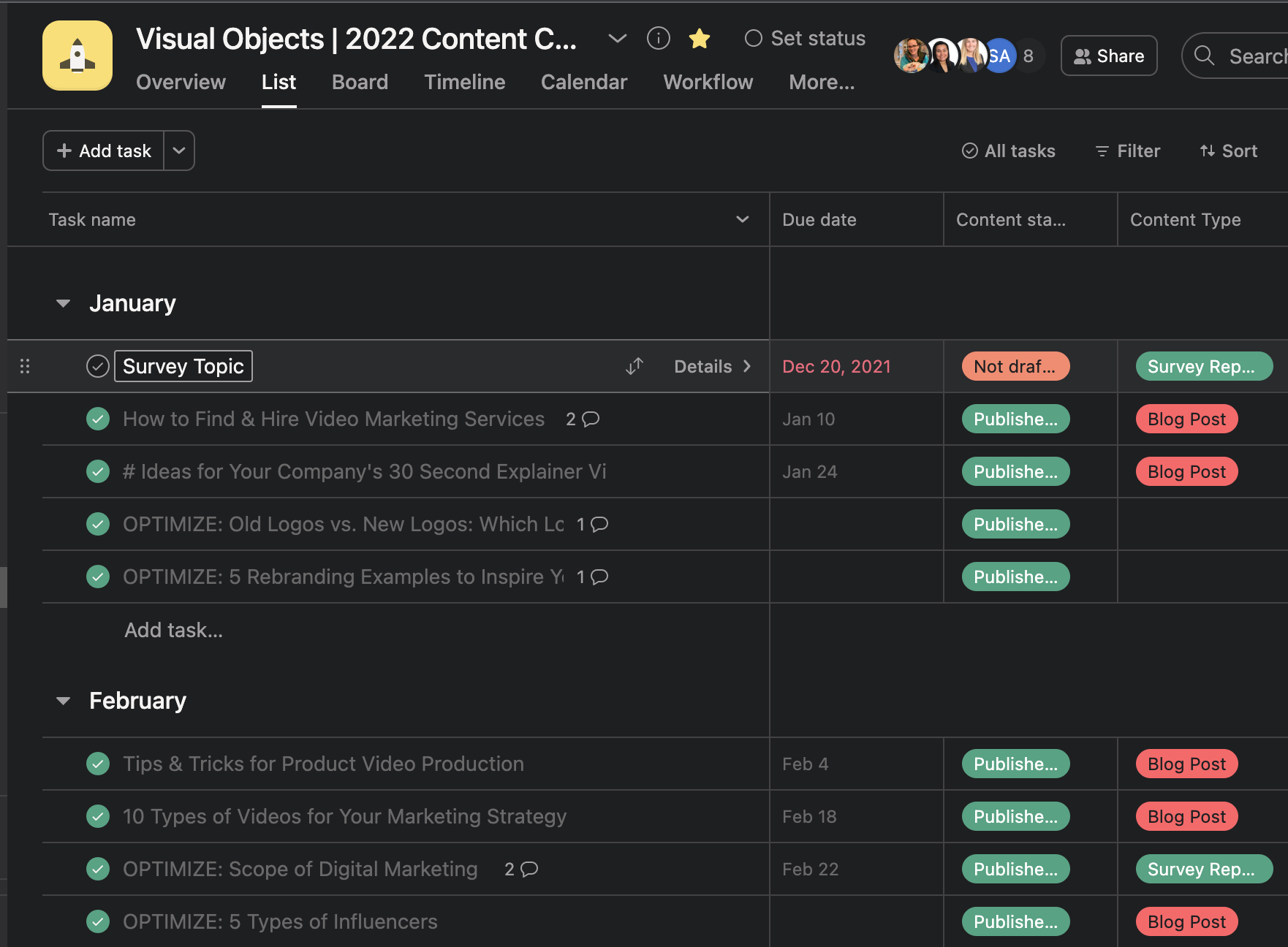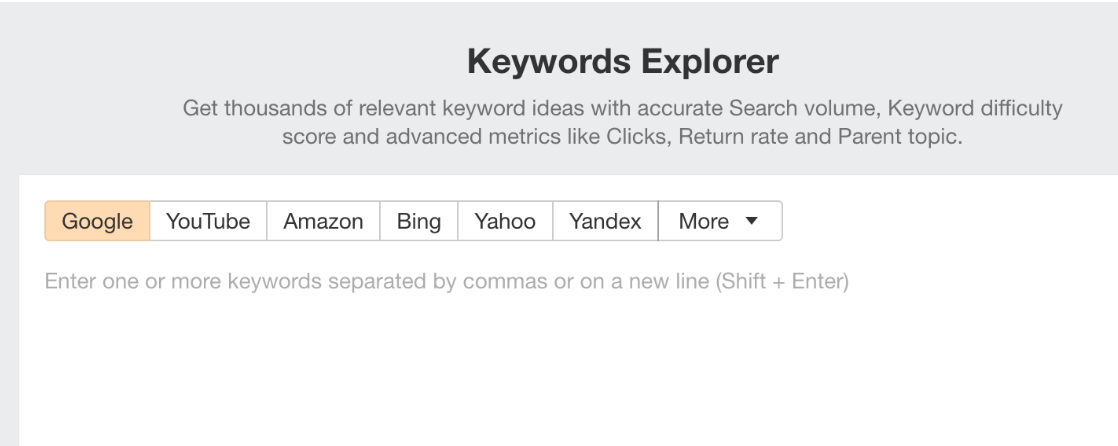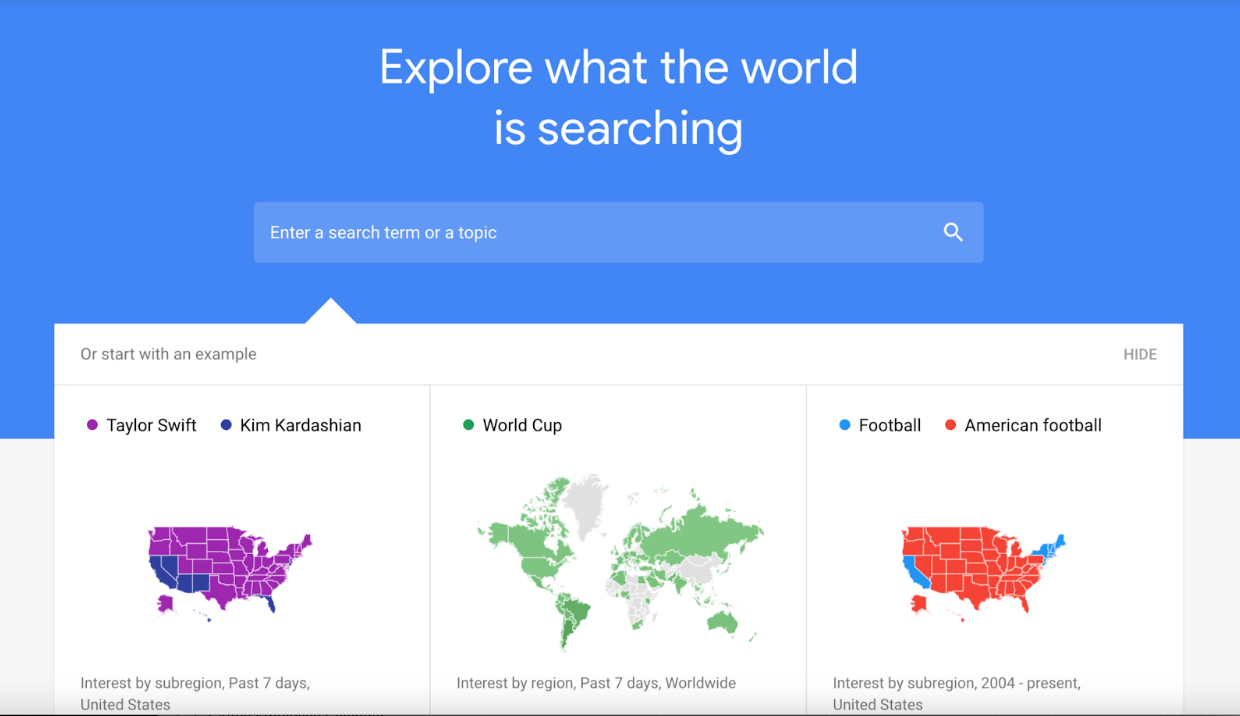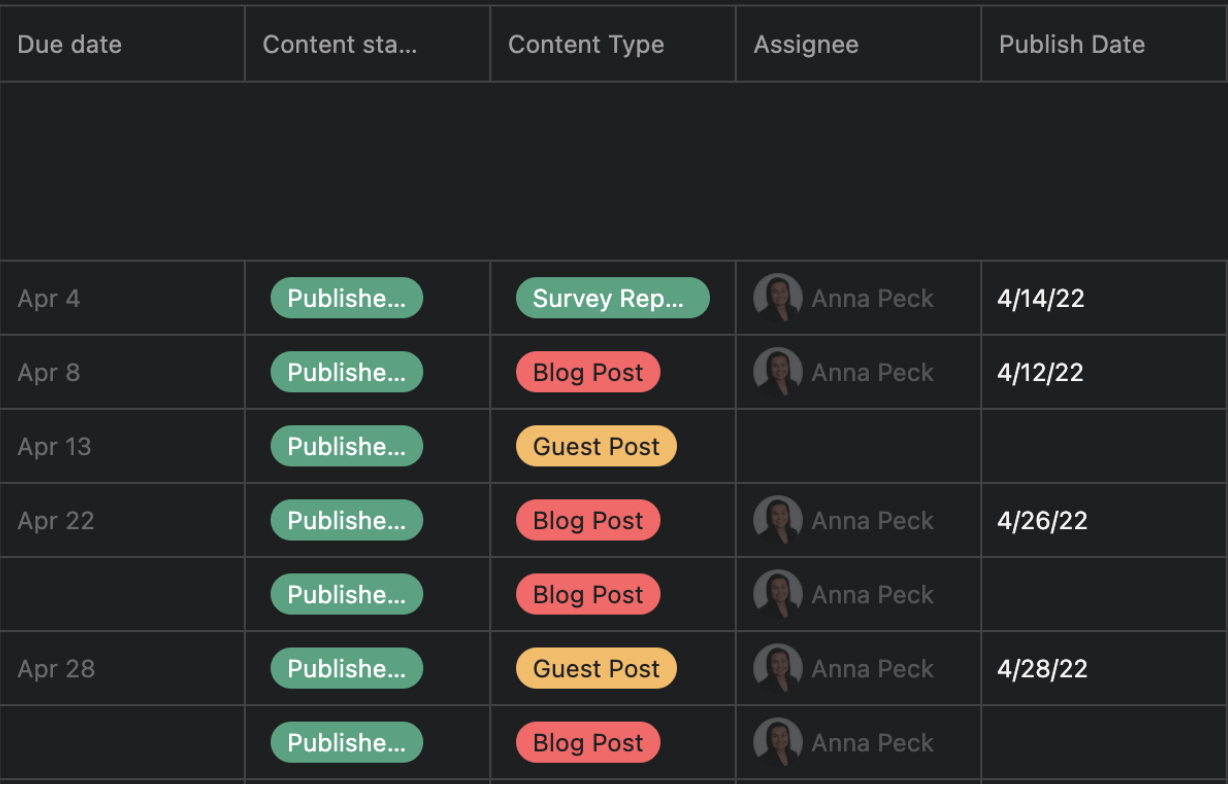What are your content plans for 2023? Organize your company’s goals within a content calendar to aid production. Learn tips for planning a content calendar for your business.
With the rise of different social media platforms and the constantly changing news cycle, it is hard for businesses to keep track of what’s working when it comes to content creation.
Your marketing team should already have an editorial calendar in place to help with that, right?
All companies should have a well-planned content calendar to keep content ideas organized for all team members. But if your company is stuck on where to start, that’s when disorganization occurs.
With more and more content creators popping up each day, it’s in your company’s best interest to create the best possible content plan.
This article will guide you through the factors of a content calendar and key tips that will assist with planning all pieces of content.
Hire a digital marketing agency to assist with your content strategy
What is a Content Calendar?
A content calendar is a schedule that allows businesses and teams to plan and organize their content in advance.
These calendars allow businesses to track the progress of their content creation, find gaps, and potentially measure performance toward specific goals.

All companies need a content calendar to have a functional marketing strategy. The type of content your company produces matters, and the best way to put a plan in action is with a streamlined content calendar.
Having a content calendar not only gives insight for marketing teams to plan campaigns; they also provide insights to stakeholders on how content production works internally.
For 2023, businesses should’ve already had initial discussions regarding future content planning. If your team is unsure where to start, review our tips for the content creation process.
Tips for Planning a Content Calendar
- Define company goals
- Choose your production channels
- Research ideas for content
- Make decisions with your whole team
- Determine publishing frequency and deadlines
- Look to past content for inspiration
- Be open to changes with evergreen content
- Create a content calendar template
1. Define Company Goals
For any content planning session, teams need to start with this main question: what is the main goal?
Teams should brainstorm about what their content means to them and the company’s goals as a whole.
For example, if your company is looking to branch into more social media-related content, think about how to craft high-quality content that goes beyond social media posts. Will you be writing more articles about TikTok or researching more about what your target audience is using for social media?
These goals for content will have an impact on your content planning as a whole, so it is crucial for your team to have a clear understanding on these goals prior to and during the content planning process.
Defining your goals should be the first step in crafting a content calendar for your business.
Read this: ‘How to Build a Digital Content Strategy’
2. Choose Your Production Channels
Content calendars aren’t focused on one specific channel – it is important to have structured content plans for all of the channels that your customers use.
If your company has multiple sites, you can focus specific types of content on each site. But if you only have one website, think about which sections of your platform could use content.
If you have a guest posting program, craft case studies or outsource articles from expert sources, where do you want those pieces of content to go?
All content pieces have a place in a company’s content schedule. Your content calendar should help organize all of that within the proper production channels.
Additional Reading: ‘How to Create an Instagram Content Calendar’
3. Research Ideas for Content
All content calendars start with ideas and goals, but it is also important to have research to back them up. It is important to think strategically about content production when it comes to determining topic ideas.
Your company should perform keyword research to find which keywords your team could rank for, or even use tools like Ahrefs to see which types of content your website performs well or not so well in.

Google Trends is also a good resource to use to see what’s going on in your target market.

Did a new social media platform add functionality that could appeal to your target audience? That could lead to a longer discussion for content strategy in the future.
Research is a key phase in any content planning for the future.
4. Make Decisions with Your Whole Team
All of your team members should have input within your company’s content marketing strategy.
While it is up to a marketing manager or lead content strategist to get the content calendar started, all other team members should be involved in brainstorming sessions for upcoming content.
Ask their input on content ideas - what have they seen in the news that applies to your industry?
Consider their opinions when it comes to writing assignments or campaigns, especially if you’re a small business.
The inclusion of the entire team will streamline processes for content and marketing efforts.
5. Determine Publishing Frequency & Deadlines
If your company is going to stick to your content calendar, your team needs to implement deadlines for the content so writers and promoters can include it within their workflows.
Each content calendar should include important dates for check-ins, draft due dates, and publishing dates.

A publishing schedule keeps everyone accountable and ensures that the team hits their metrics.
The key to publishing content is to avoid content overload – make sure each piece of new content has time to live on the website before the new one is published. Also, try to schedule different content types in a cadence to help with that frequency.
Content calendars work as project management tools, keeping the team on track until publication dates.
6. Find Inspiration in Past Content
Your marketing and content teams don’t always have to create content from scratch.
A majority of companies have useful content that just needs the smallest bits of tweaking to appear higher in SERPS.
Within your company’s content calendar, include opportunities for content optimizations. Your team can optimize older blog posts to mirror new writing styles or target new keywords that are within your company’s goals.
By reviewing older content, your team can also set new content topic ideas. For example, if you’re seeing a gap in digital marketing-related content, your team can include that as one of the focuses in the future.
Additional Reading: ‘5 Tips to Improve and Maintain Your Position in SERPS’
7. Be Open to Changes with Evergreen Content
Your content calendar will likely not stay the same as the year moves on, so prepare yourself now for changes that might occur.
Having ad-hoc or evergreen content available can attract different personas from your target audience to your website.
Some examples of evergreen content include:
- How to Change Your Instagram Handle
- How to Update Your LinkedIn Profile
- How to Create Infographics for Your Social Media Content Calendar
These examples above are timeless and can be quick wins for your business.
It is also important to note that changes in trends or other factors can prompt new additions to your content calendar. For example, if a tech company has a new product launch, your team might want to write a quick blog about it if it fits within your target audience’s purview.
8. Create a Content Calendar Template
Businesses should be making a new content calendar each year, and since there are a lot of content calendar tools online, it would be good to utilize them for your business to create a template.
Here is a list of content calendar tools used by marketing teams everywhere:
- Asana
- Google Calendar (with a special content team calendar view)
- Excel/Google Sheets
- Trello
- HubSpot
Your content calendar should be constructed according to your team’s specific needs, but it should at least include the following information:
- The topic
- The type of content
- The dates and times for drafts & publishing
- The person in charge and any content mentors
- The channel in which the content will be published
- A slot for any notes or additional information
While your content calendar should include these key elements, feel free to experiment and make it fun. Use color-coded signals or other tricks to keep your team organized and on track.

Use our content calendar template for your company’s marketing strategy.
Get Started on Your Company’s Content Planning for 2023
A content calendar is an extremely important tool for all marketers. The tool serves as the framework for your content ideas, business goals, and other content marketing efforts.\
Without one, it would be challenging to keep track of content creation, stay ahead of online trends, and consistently communicate with your target audience.
Whether you are starting in 2023 or a veteran of the content calendar game, start organizing your content efforts for 2023 today.
Additional Reading: